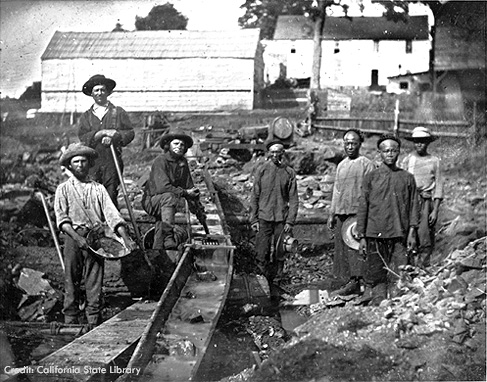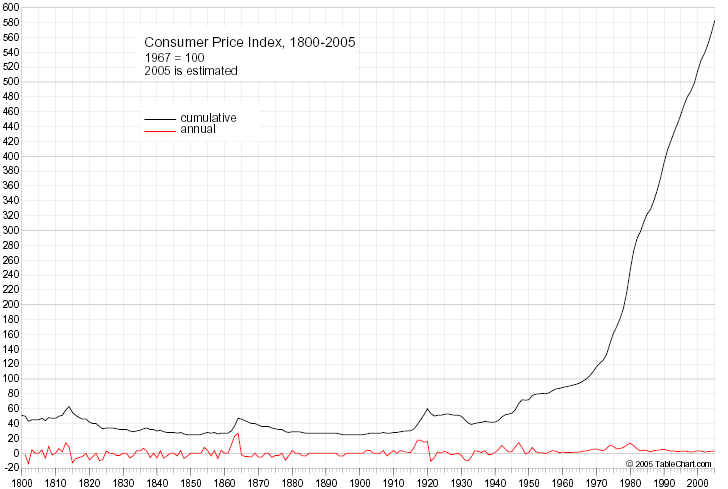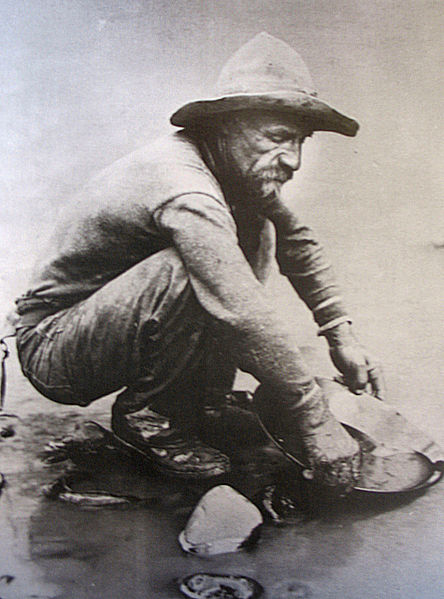
In my research into the California Gold Rush, I’ve read about prospectors who struck it rich and returned to their homes wealthy men, about others who made a fortune and then spent it, and about still other men who never made a dime. And I started wondering how much it took to become wealthy in 1849-50.
One article I found, “The Financial Situations of Those Who Dug for Gold,” indicates that $10,000 to $15,000 made a man successful, and some prospectors acquired as much as $60,000 to $75,000.

Keep in mind that $100 in 1849 would buy about $3,055 today—a more than 30-fold increase. So $100,000 would give a man the equivalent of more than $3,000,000 today. It only took $33,000 to have the equivalent of $1,000,000 today. So a man making $60,000 in the gold fields would have around $2,000,000—success, yes, but many people have been more successful.
Then, as in any land-dependent activity today, the important thing is LOCATION.
One story tells of a man who made $83,500 in two hours time. An hourly wage of $43,250 is more than enough to match the income of most business tycoons today!
Another anecdote tells of one pan of dirt yielding $1400 in the spring of 1850.
And here’s a description of the gold finds around what is now Placerville, California:
. . . The first discovery was made in Hangtown Creek, near the mouth of Cedar Ravine, the latter being the first ravine worked, and found to be very rich, yielding upwards of $1,000,000. The next discovery was in Bedford Avenue, at that time called ‘Log Cabin Ravine,’ and a large amount of gold was taken from it . . . . [One man] took home with him about $25,000. From this ravine had been taken altogether, as near as can be determined, about $250,000. . . .

And here is the tale of another ravine in the vacinity:
The very richest ravine that was discovered up to this time, the spring of ’51, around Hangtown, was the Oregon Ravine. This ravine was first discovered by two men from Oregon named Yocum. They first worked a narrow strip up through the ravine about three feet in width, . . . . Their method of working was of the most primitive kind. One would with pick and shovel remove the dirt from the surface to near the bed rock, which was about three feet in depth, and the other, with an old knife or a sharp stick in one hand, would stir up the dirt, and as the bright pieces of gold showed themselves, would pick them up and drop them into a tin cup, which he constantly carried in the other hand. This was their slow method of working, and although they realized a fortune by this process, they did not glean as much as they should have done. How much these two men realized was never known, for they were very cautious; but it was supposed that they took home with them about $100,000 each. Old man Harper, who also worked in this ravine, was said to have made out $60,000; several others also, have made large profits here. They all left for home in the fall of ’49. Soon after my arrival, there were at least 200 men at work in this ravine, and all doing well, for the ravine was wide and paid richly from bank to bank. Dr. Ober was very successful, and as he passed along down at night among the miners who were at work below him, with a smiling countenance showed his tin cup in which he carried his gold. I found that about $150 was his average day’s work. In my opinion, Oregon Ravine yielded at least $1,000,000 if not more, and considering its size was the richest one in this portion of the country.
As this description indicates, the early miners—some of whom left even before the Forty-Niners arrived—were more likely to strike it rich than those who came later. The most fortunate and the wisest made their bundle, then left California.
Other anecdotes tell us that men made fortunes from serving the prospectors also:
. . . Fortunes were realized from Spanish, Murderer’, Big and Michigan Bars, where Ex-Governor Stanford had his little store in ’52, the germ from which sprang the Great Overland Railroad. . . .
Thus, the fortune that created the great Stanford University, where I went to law school, began in a store serving Gold Rush miners.
My current work-in-progress describes work in gold fields such as these. Some characters keep their fortunes and others never find their fortunes or lose them. Still other characters lose their lives.
Would you have been wise and left California, or would you have spent your fortune in the saloons?




I would hope I would have had the good sense to leave, but who knows what gold fever would do to a person.
[…] April 2016, I wrote a post entitled “How Much Gold Was Enough in the California Gold Rush Years?” in which I wrote about what it took for the early prospectors to be successful in California. […]